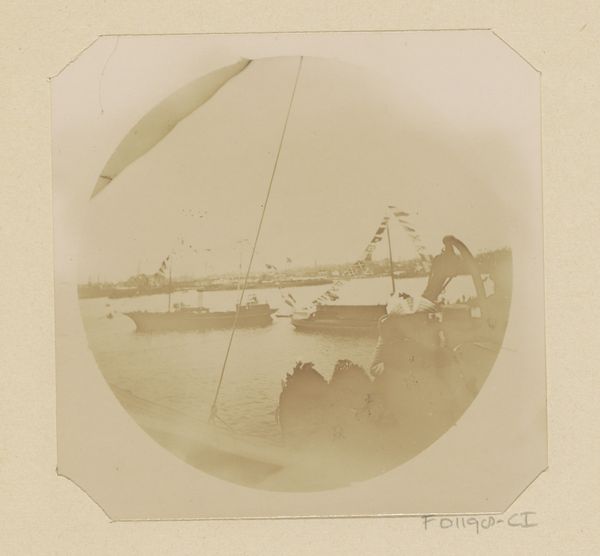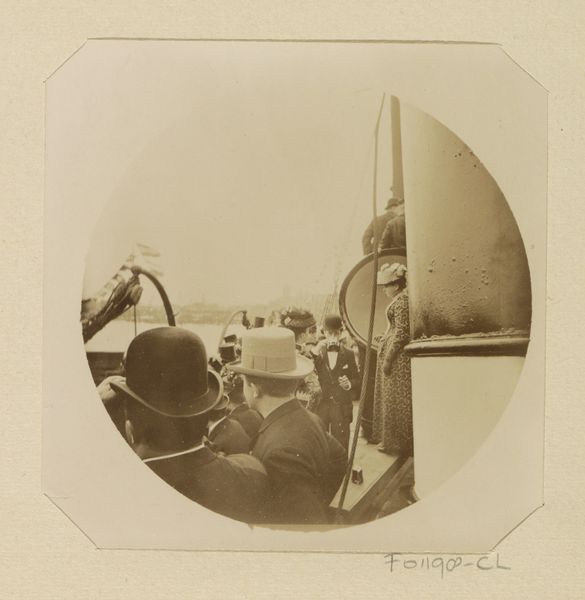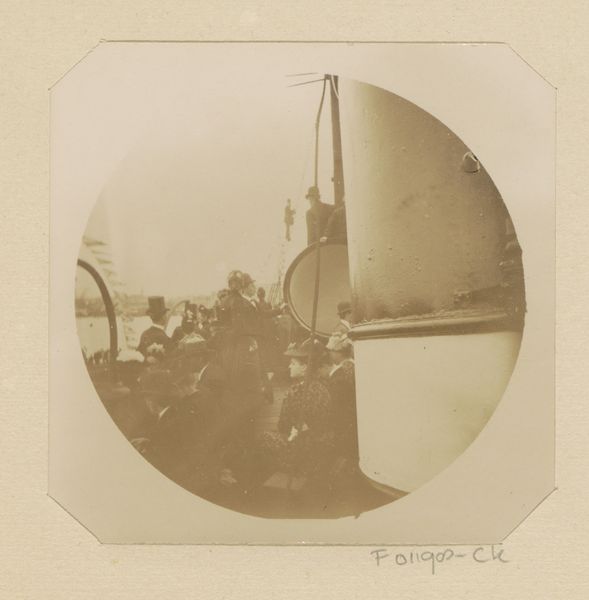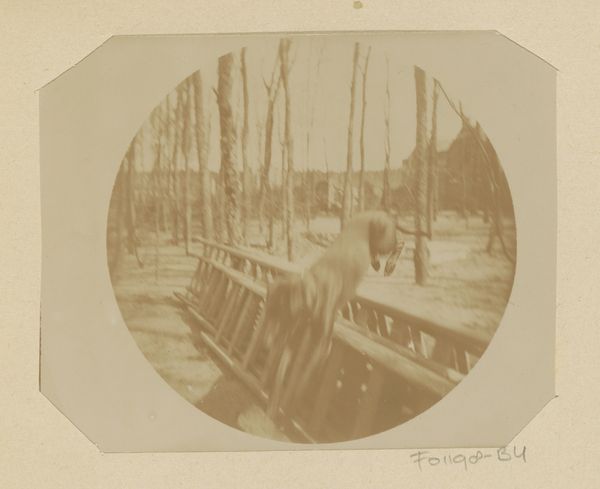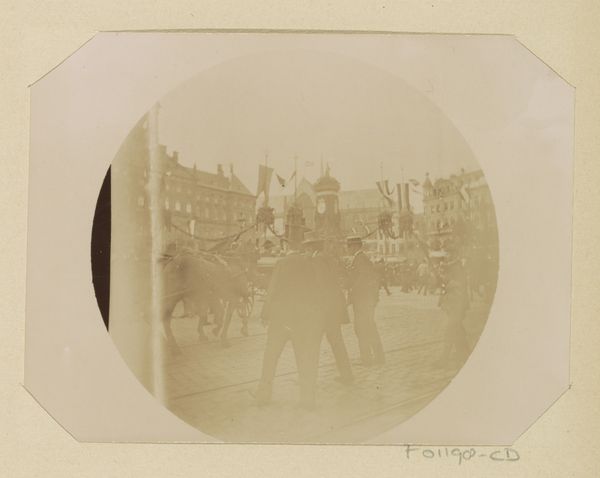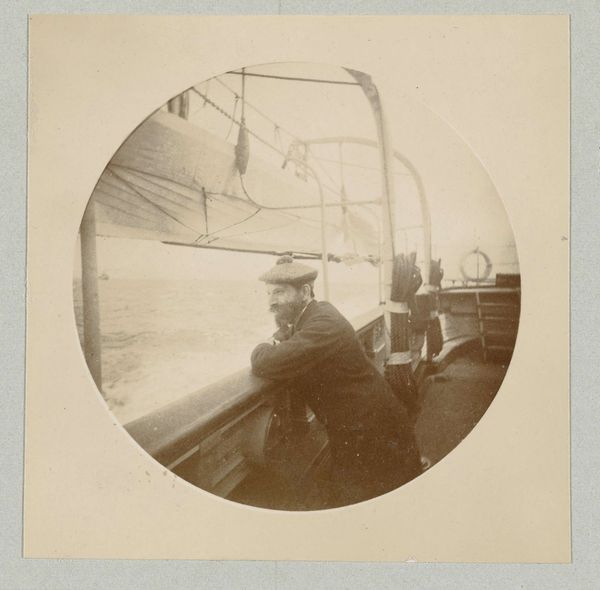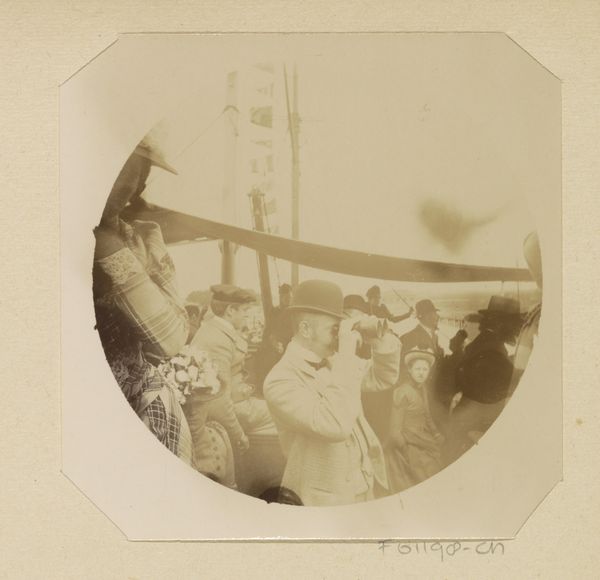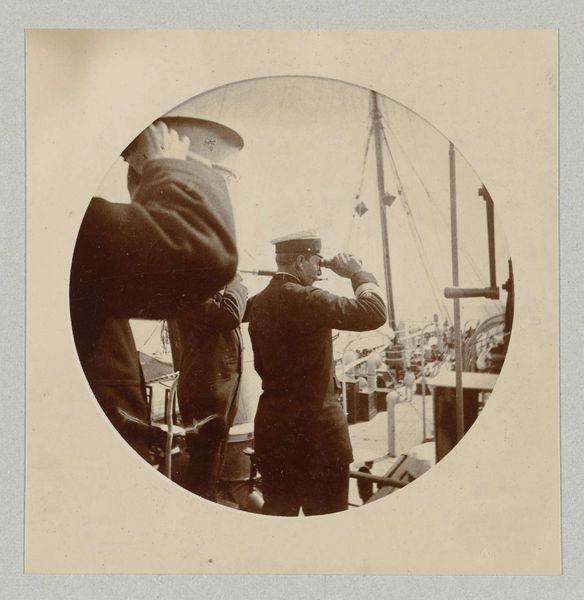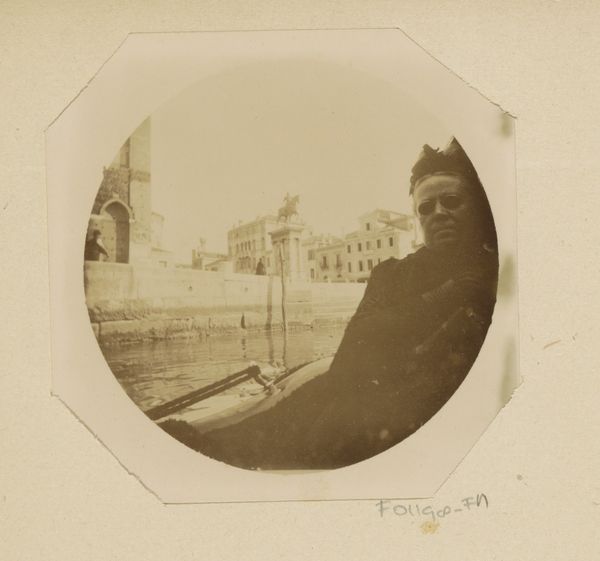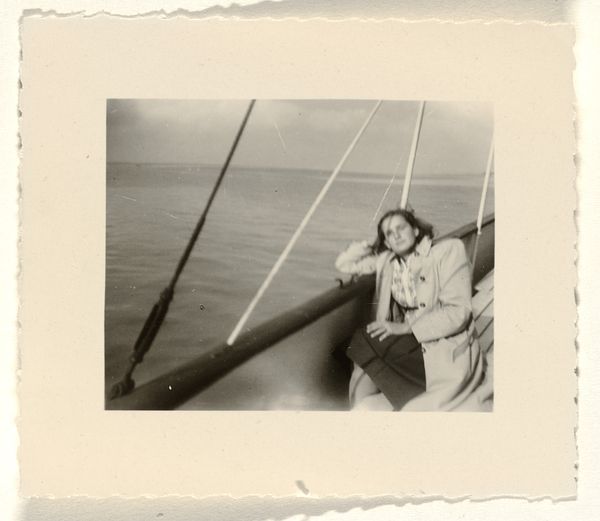
Dimensions: height 99 mm, width 100 mm
Copyright: Rijks Museum: Open Domain
Editor: Here we have "Menigte op een schip tijdens de Keizersfeesten in Amsterdam," a gelatin-silver print photograph taken in 1891 by Johanna Margaretha Piek. It seems to depict a lively scene, perhaps even a celebration, onboard a ship. What particularly intrigues me is the density of the crowd and the historical context of the "Keizersfeesten." What strikes you when you look at this photograph? Curator: Well, given my inclination towards understanding art through socio-political lenses, I find myself wondering about the representation of "the crowd" in this image. Who exactly are these people celebrating? What does it mean to commemorate the "Emperor" in late 19th-century Amsterdam through such an elaborate, public event? The very act of assembling this large number of people is itself an important performance, but one must always wonder, “performance for whom, and for what gain”? Editor: That's a good point. Looking closer, everyone seems so… orderly, or at least, neatly arranged. There are distinct classes represented in the way they are dressed. Curator: Exactly. Think about the burgeoning middle class in Amsterdam at the time, eager to display its loyalty and participation in the nation's prosperity. A photograph like this then becomes a form of visual propaganda, reinforcing specific social and political hierarchies. The ship becomes a stage where individuals perform their roles within the larger spectacle of national identity. Editor: So, you’re saying this isn't just a snapshot of a fun day but also a deliberate construction designed to showcase something bigger about Dutch society at the time? Curator: Precisely. Look at the vantage point, slightly elevated, clearly favoring the ones looking at the parade. Someone framed this event intentionally, and they decided the angle to promote a particular viewpoint. The photograph operates not merely as a record, but also as an active participant in shaping public memory and national identity. Editor: It’s fascinating how much depth there is behind what at first seems like just a historical photograph. Now, I see so much more to it! Curator: Indeed. By interrogating these images critically, we unveil hidden narratives about power, class, and the public role of art in society. A powerful learning experience all round.
Comments
No comments
Be the first to comment and join the conversation on the ultimate creative platform.
